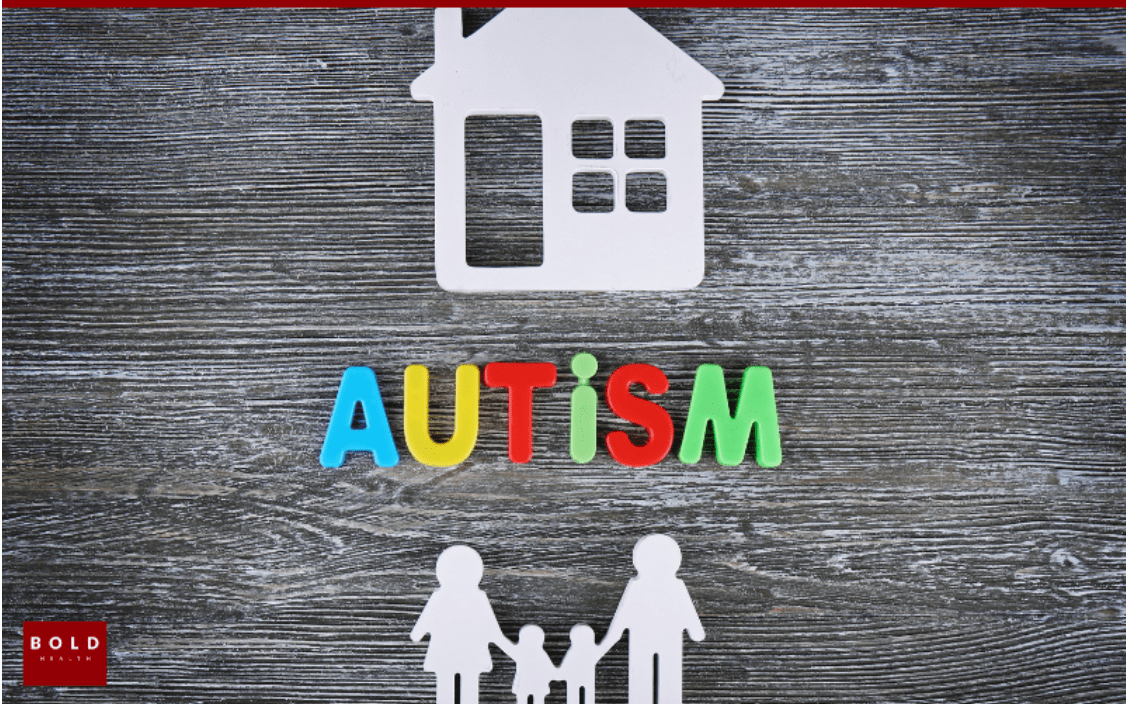

At BOLD Health, we prioritize providing the most accurate and reliable autism evaluations possible, which is why we use the Autism Diagnostic Observation Schedule (ADOS) method. The ADOS is widely regarded as the gold standard for diagnosing Autism Spectrum Disorder (ASD) in both children and adults. This comprehensive tool helps us assess a range of behaviors and social interactions to deliver a precise diagnosis and create personalized treatment plans.
In this blog, we’ll explore what the ADOS method is, how it works, and why it’s trusted by professionals for evaluating autism across all age groups.
What is the ADOS Method?
The Autism Diagnostic Observation Schedule (ADOS) is a structured, standardized assessment used to observe and evaluate behaviors that are characteristic of autism. It’s designed to gauge how individuals interact socially, communicate, and engage in various tasks, providing a thorough picture of whether someone meets the criteria for an autism diagnosis.
The ADOS method is flexible, allowing it to be used for people across a wide range of ages and abilities, from toddlers to adults. It consists of a series of modules tailored to the individual’s developmental level and language skills, ensuring that the assessment is appropriate for each person.
Why is the ADOS Method Considered the Gold Standard?
There are several reasons why the ADOS method is considered the most reliable tool for diagnosing autism:
- Standardized and Structured
The ADOS method uses a standardized set of activities and prompts that allow clinicians to observe behaviors in a controlled environment. This consistency makes it easier to identify patterns and compare results across individuals. - Flexibility for Different Age Groups
ADOS is designed to be adaptable, with different modules available depending on the person’s age and language abilities. This flexibility ensures that it can be used for toddlers, children, adolescents, and adults. - Focus on Core Autism Symptoms
The ADOS method focuses specifically on key areas related to autism, such as communication skills, social interactions, and repetitive behaviors. These are core symptoms of ASD, making the ADOS an effective tool for identifying the disorder. - Backed by Research
The ADOS method has been validated by extensive research, proving its effectiveness and reliability in diagnosing autism. It’s used by clinicians worldwide and has become the standard for autism evaluations in clinical settings.
How Does the ADOS Method Work?
The ADOS method is divided into different modules, each tailored to specific age groups and language abilities. These modules help clinicians observe behaviors that are relevant to the diagnosis of autism.
The Four ADOS Modules
- Module 1: For Toddlers and Nonverbal Children
- This module is designed for young children who are either nonverbal or minimally verbal. It uses play-based activities to assess how the child communicates and interacts socially. Clinicians may observe behaviors like eye contact, gestures, and reactions to social prompts.
- Module 2: For Children with Emerging Language
- Module 2 is for children who have some verbal abilities but may not yet be using full sentences. The tasks in this module are still largely play-based but include more opportunities for verbal communication. This allows the clinician to assess both nonverbal and emerging verbal skills.
- Module 3: For Verbally Fluent Children and Adolescents
- This module is used with older children and adolescents who are verbally fluent. It focuses more on social interactions, conversations, and understanding of social cues. The activities are designed to elicit behaviors that reflect how the individual engages in social relationships and communication.
- Module 4: For Verbally Fluent Adolescents and Adults
- Module 4 is for older adolescents and adults who are fluent in verbal communication. It includes tasks that assess how the individual handles social situations, emotional expressions, and complex interactions. This module is often used for adults seeking a late autism diagnosis.

What to Expect During an ADOS Evaluation at BOLD Health
At BOLD Health, we ensure that the ADOS evaluation process is thorough, compassionate, and tailored to the individual’s needs. Here’s what you can expect when undergoing an ADOS assessment:
1. Initial Consultation
The evaluation begins with an initial consultation where Dr. Theodore Germanos will gather detailed information about the individual’s medical history, developmental background, and any previous concerns or diagnoses. This step helps create a complete picture of the person’s experience and prepares for the ADOS assessment.
2. ADOS Assessment
During the ADOS assessment, the individual will engage in a variety of structured activities. Depending on the module used, these tasks may include playing with toys, engaging in conversation, or responding to social cues. Each activity is designed to bring out specific behaviors that help identify whether the individual meets the criteria for an autism diagnosis.
3. Observing Core Behaviors
The ADOS method focuses on observing key behaviors, including:
- Social interactions: How the individual initiates or responds to social engagement.
- Communication skills: Both verbal and nonverbal communication are evaluated to see how the person expresses themselves.
- Repetitive behaviors: The clinician will observe whether the individual engages in repetitive actions or shows restricted interests.
- Sensory sensitivities: Any unusual reactions to sensory stimuli, such as sounds or textures, may also be noted.
4. Scoring and Analysis
Once the assessment is complete, Dr. Germanos will analyze the results using a standardized scoring system. The ADOS scoring system helps quantify the individual’s behaviors and compare them to typical autism spectrum patterns. This data is used to determine whether the person fits the diagnostic criteria for ASD.
5. Detailed Report
After the evaluation, you will receive a detailed report outlining the findings. This report will explain whether an autism diagnosis is appropriate and provide specific recommendations for next steps, including any therapeutic interventions or support services that may be beneficial.
Why the ADOS Method is Effective for All Ages
One of the reasons the ADOS method stands out as the gold standard for autism evaluations is its effectiveness across different age groups. Whether you are seeking an evaluation for a toddler showing early signs of autism, a child struggling with social interactions at school, or an adult seeking clarity later in life, the ADOS method provides a reliable and accurate diagnosis.
For Toddlers and Children
Early diagnosis can significantly improve long-term outcomes. The ADOS method’s play-based approach helps clinicians observe key behaviors in young children without creating unnecessary stress. This allows for accurate early identification of autism, enabling timely intervention.
For Adolescents
Adolescence is a critical time for social development. The ADOS method can help identify social communication challenges and guide appropriate interventions that support teens in navigating complex social environments and managing emotional regulation.
For Adults
Many adults may not have been diagnosed with autism in childhood, but may seek clarity later in life. The ADOS method’s structured tasks provide insight into social, communication, and behavioral challenges that may have been overlooked, helping adults understand their experiences and access appropriate support.
The Role of Dr. Theodore Germanos at BOLD Health
At BOLD Health, our autism evaluations are led by Dr. Theodore Germanos, a board-certified Child and Adolescent Psychiatrist with extensive experience in diagnosing autism across all age groups. Dr. Germanos uses the ADOS method to ensure that each evaluation is comprehensive, compassionate, and tailored to the individual’s specific needs. His expertise in both child and adult psychiatry makes him uniquely qualified to provide accurate diagnoses and personalized care plans.
The Importance of Accurate Diagnosis
Accurate diagnosis is crucial for developing an effective treatment plan and accessing appropriate resources. The ADOS method helps ensure that individuals receive a thorough and precise evaluation, reducing the risk of misdiagnosis and allowing for tailored interventions that support long-term success.
At BOLD Health, we believe in taking a holistic approach to autism care. An accurate diagnosis is the first step in creating a personalized plan that addresses not just the diagnosis but the individual’s unique strengths, challenges, and needs. Whether it’s through therapy, educational support, or behavioral interventions, we are committed to helping each individual thrive.
FAQs
- What is the ADOS method?
The ADOS method is a structured observation tool used to evaluate social interactions, communication, and behaviors in individuals being assessed for autism. - How long does an ADOS evaluation take?
The ADOS evaluation typically takes a few hours, including both the assessment and the initial consultation. - Is the ADOS method suitable for adults?
Yes, the ADOS method has modules specifically designed for adults, making it an effective tool for diagnosing autism at any age. - Why is the ADOS method considered the gold standard?
The ADOS method is considered the gold standard because it is a reliable, research-backed tool that provides a thorough and accurate diagnosis of autism across all age groups. - What happens after an ADOS evaluation?
After the evaluation, you will receive a detailed report outlining the findings and recommendations for next steps, including any necessary therapeutic interventions or support services.

Take the First Step with BOLD Health in San Diego
If you or a loved one is showing signs of autism, the ADOS method at BOLD Health in San Diego can provide the clarity and answers you need. Dr. Theodore Germanos and our team are dedicated to offering expert, compassionate care at every stage of the process.
Contact us today to schedule your autism evaluation in San Diego and take the first step toward understanding and support.
Phone: (760) 503-4703


